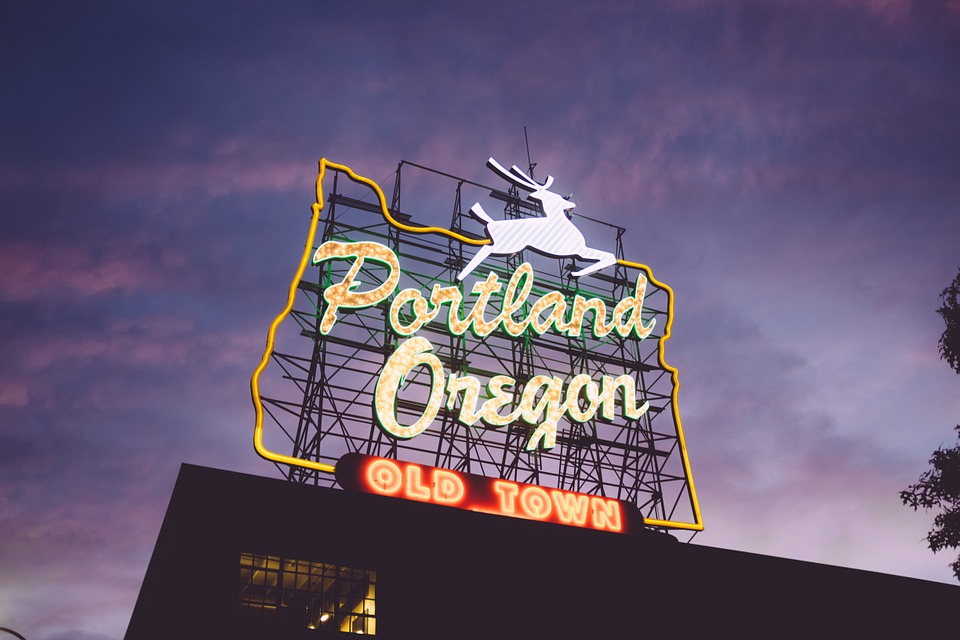We love to attend conferences to connect with colleagues and to explore interesting, new, and controversial ideas. It’s not easy to transmit that learning to the public. Our conference recaps are an attempt to share some of our most poignant learnings with the wider world.
Last weekend, Executive Director Robin Teater and Operations and Technology Manager Linn Davis attended the Elevate Engagement conference in Portland, Oregon. Their recap appears below.
* * *
Linn Davis: Hi Robin! Last weekend, you and I went to a fascinating conference about elevating engagement in journalism – well, I guess that was the name of the conference: Elevate Engagement – at the University of Oregon’s School of Journalism and Communication here in Portland. It was a unique mixture of journalists and deliberation folks (like us), and I wanted to hear your thoughts on it. Let’s start with highlights from the breakout sessions on the first two days. I’ll go first.
My most interesting session was one on trust and journalism – right along the lines of our very successful Democracy Salon a few weeks back. And the most interesting part of the discussion was when the group focused not on the places where trust has eroded in society and in our institutions but on where trust has persisted despite historic lows in trust in media, government, business, civil society, polling, law enforcement, and so on. And the conclusion was essentially that persistent trust falls into two categories: local and ideological.
By local, I mean things that people can more easily personally verify: people tend to trust their kid’s teacher even when they don’t trust their school board; their own neighbors even when they’re fearful of crime in their town’ or their own Congressperson even when they hate Congress. On the other hand, we also seem to maintain trust for things that strongly exhibit an ideology or lifestyle that we identify with or aspire to: brand-name consumer goods, hyper-partisan media sources, even some institutions fall into this category (e.g. the Park Service on the left or the military on the right). We can’t verify that trust, but we go along with it anyway because we naturally (often incorrectly) have faith that we can trust people we agree with or who represent a part of what we see as our character.
And, if I may put a value judgment on it, it feels as though that second kind of trust is cheap, and therefore far less valuable and not worth replicating. At the extreme, it’s perhaps even a manipulation of our human need to feel we belong to something and an exploitation of our habit of finding patterns where none exist. On the other hand, local trust feels more organic and more like something that could be built on. It’s not the be-all-and-end-all – especially since we often live in highly segregated geographic spaces – but it’s at least a basis for trust that doesn’t rely on dividing the world into affinity groups and lifestyle clans. Perhaps once we’ve built more trust among neighbors, we can build trust between neighbors of neighbors and so on – that there’s a foundation there on which to scale up.
Robin Teater: Wow, that sounds like a fascinating session, Linn. I, too, found the conference to be really engaging (which is only appropriate!). The session you attended on trust in media is on so many minds today, it was interesting to hear how that conversation distinguished between local and ideological types of trust. It reminds me of Eric Liu and Nick Hanauer’s book The Gardens of Democracy, with its emphasis on the importance of building “weak ties” between ideologically and geographically disparate people. These ties help to mitigate the pernicious power of self-reinforcing beliefs within homogeneous groups. The phenomenon of trusting things you can personally verify, based on direct experience and relationships, of course makes sense. The challenge would seem to be how to create opportunities for different groups to develop relationships outside of the superheated enclaves of social media and homogeneous neighborhoods, and into a larger and more diverse public square. (See Community Oregon for one such experiment.)
Meanwhile, the session I attended that impacted me most was the one on how journalists can more effectively report news from “diverse communities.” (How one define diverse communities is an issue in itself. I attended another session where that was the sole question for the 90 minute conversation owing to the myriad complexities inherent in the term.) Speaking of issues of trust, my sense was that there was very little trust between many communities of color and what might be regarded as the “mainstream” media in their areas. The metaphor of an anthropologist parachuting in to “study the natives” and use the information given to them for the media outlet’s own purposes, interpreted from an culturally and historically ignorant lens, seemed appropriate. Little of the informational or analytical value redounds to the community itself, while the stories tend to be packaged in a way that reinforce stereotypes that don’t challenge the views of the outlet’s readers. The news on this front is both good and disappointing: many more communities are relying on their own reportage to speak to issues that matter to them, which is positive. There is still much to be done is how to get so-called “mainstream” media to develop those relationships so they, too, can produce effective and responsible reportage from a wide range of communities within their distribution area. Until newsrooms are more diverse (and inclusive), this will likely remain a problem.
With all that said, one of the great features of this conference was the opportunity to take action on our new insights. One proposal suggested that organizations involved in the dialogue and deliberation (D&D) world develop an easy-to-use guide for journalists to use when convening or hosting community conversations on issues that matter to them. What did you think of that idea?
Linn: Interesting stuff! I think you make an excellent point that we need both homegrown reporting in communities underserved by traditional media and greater diversity in those traditional media newsrooms. The more time I’ve spent around the Citizens’ Initiative Review, the more I’ve come to believe that its greatest asset is not actually its refined process, not its facilitation, not even its strict nonpartisanship – though those are all vital. What truly sets it apart from virtually every other gathering of people in public or private society is the makeup of its participants: that it’s truly a microcosm of whatever state or community it’s in. CIR participants are randomly selected but demographically representative on seven factors – race/ethnicity, age, gender, geography, party affiliation, educational attainment, and voting frequency – and I’m convinced there’s simply no substitute for the internal value and external legitimacy that broad-based diversity provides.
In fact, representativeness on all but perhaps the last two of those factors seems like a good expectation of newsrooms everywhere, and all seven (plus several more) seem like excellent factors to aim for in any sort of community engagement activity. At this conference, actually, I found myself advocating more for our concerted, almost-scientific approach to participant diversity than anything else. As journalists become more involved in co-convening and personally facilitating public processes, a commitment to diversity of identity and political worldview among participants seems essential.
But to your question! It was Andrew Rockway of our sister organization, the Jefferson Center, who workshopped that idea: that nonpartisan deliberation folks like us create a brief, usable engagement manual for journalists. And it seems like an excellent idea. We in the dialogue, deliberation, and facilitation fields have lots of knowledge about engagement, but it can quickly become overwhelming for someone just dipping their toes into public engagement. Information overload is paralyzing. A pithy manual, chock full of real-world examples and hot tips seems like absolutely the thing that’s needed.
This brings up my biggest question to coming out of this conference: What exactly should our role be in a world of more publicly engaged journalism? Should we in the deliberation community encourage journalists to both convene and facilitate engagement projects and then we simply offer our services as sort of technical advisors? Should we be equal partners on the convening and/or facilitation? Or should the deliberation folks, ideally, run the show, with journalists there to offer expert testimony, public recording, and broader outreach beyond the room? Or perhaps it depends on the situation?
Robin: Well, you know me, Linn. I am a both/and kind of person and I think the idea of helping journalists convene/host community engagements and at times facilitate them is a good one. That said, I lean towards helping them be honest brokers as conversation conveners, and less on the side of having to actually facilitate such conversations. That dual role could put them in an untenably conflicted position as journalists. My hope would be that a close partnership between dialogue and deliberation organizations and media organizations could fill the range of needs for effective engaged journalism to happen. They do what they do best, we do what we do best, the community gets what it needs on its own terms and trust is restored once again. A healthy democracy ensues!
* * *
Let us know what you think. Write to us here, or tweet us @healthydem.


